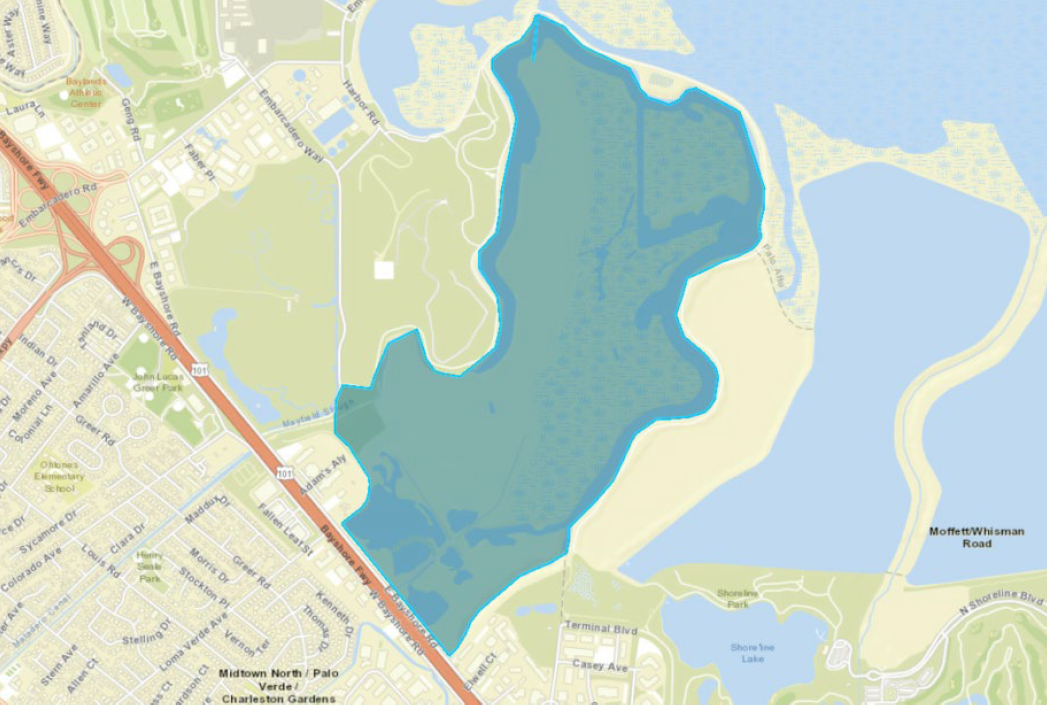Aerial Treatment of Bay Marshes to Reduce Population of Nuisance Mosquitoes
Annual preventative treatment scheduled for March 26, 2020
SANTA CLARA COUNTY, CALIF. – The County of Santa Clara Vector Control District is scheduled to begin its annual program to prevent the spread of mosquitoes, specifically the winter salt marsh mosquito (Aedes squamiger), with the application of naturally occurring microbes and a mosquito-specific hormone on Thursday, March 26. This treatment methodology has been safely and effectively used by the County annually since 1992.
The District has been closely monitoring the development of mosquito larvae in the areas to be treated. Current conditions create a high probability that a significant number of salt marsh mosquitoes will become adults in a few days if left untreated. This species is known to bite viciously during the day and can fly more than 15 miles from its breeding grounds to feed on humans and other mammals.
For the difficult to reach Palo Alto Flood Basin marsh, a helicopter will be used to cover large areas and minimize impact to the marsh habitat. A map of the area to be treated can be found below or at www.SCCvector.org. The treatments are scheduled to start at approximately 7:30 a.m. and last a few hours.
“Recent rains have provided the ideal environment for mosquito larvae to develop in hard to reach areas of the marsh,” said Vector Control District Manager Dr. Nayer Zahiri. “These treatments will help reduce adult mosquito populations in the area.”
The areas will be treated with a naturally occurring soil bacterium (Bacillus thuringiensis var. israelensis, or Bti), that activates when consumed by mosquito larvae, and a mosquito-specific treatment (methoprene) that prevents them from becoming adults. This eco-friendly application is short-lived in the environment and not harmful to birds, fish, other insects, wildlife, or humans. Aerial application of these treatments is used when mosquito breeding occurs over larger areas, a common practice by vector control districts throughout the Bay Area in their Integrated Pest Management (IPM) programs. More information about these products is available at SCCvector.org.
In the Palo Alto Flood Basin, the helicopter may make low-altitude passes over trails surrounding the treatment area, so the public is advised to avoid areas where the helicopter is operating. Signage will be posted at various locations around the treatment area to notify visitors about the treatment operation. The marsh trails are not opened to the public during treatment that is expected to last several hours.
Commonly called the winter salt marsh mosquito, Aedes squamiger lays its eggs in the moist soil in late spring and early summer. These eggs can lay dormant for many years, even after repeated flooding.
The District encourages the public to report mosquito-breeding sources and to take preventive measures, such as dumping standing water on your property, wearing long-sleeved shirts and long pants, and applying repellent when outdoors where mosquitoes are biting.
For free assistance on mosquito control, the public can contact the District office by calling (408) 918-4770, or filling out a service request online.
About the County of Santa Clara, California
The County of Santa Clara government serves a diverse, multi-cultural population of 1.9 million residents in Santa Clara County, the sixth largest county in California. With a $8.17 billion budget, more than 70 agencies/departments and nearly 22,000 employees, the County of Santa Clara plans for the needs of a dynamic community, offers quality services, and promotes a healthy, safe and prosperous community for all. The County provides essential services, including public health and environmental protection; behavioral health and medical services through the County of Santa Clara Health System including Santa Clara Valley Medical Center (Hospital and Clinics), O’Connor Hospital and Saint Louise Regional Hospital; child and adult protection services; homelessness prevention and solutions; roads, parks and libraries; emergency response to disasters; protection of minority communities and those under threat; access to a fair criminal justice system, and scores of other services, particularly for those members of our community in the greatest need.
Visit us at SCCGOV.org
Follow us on social media
Facebook @County.of.Santa.Clara
Twitter @sccgov
Media Contact: Beverly Perez, County of Santa Clara, Vector Control District, (408) 918-4602, [email protected].
